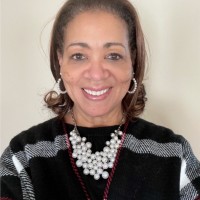
Celebrating International Day of the World's Indigenous Peoples
The International Day of the World's Indigenous Peoples is observed August 9th each year. Its goal is to raise awareness and protect the rights of the world’s indigenous population. This event also recognizes Indigenous Peoples' achievements and contributions to improve world issues. The United National General Assembly first pronounced the day in December 1994.
Who are Indigenous Peoples?
Indigenous Peoples have retained social, cultural, economic and political characteristics that are distinct from those of the dominant societies in which they live. Despite their cultural differences, Indigenous Peoples from around the world share common problems related to the protection of their rights as distinct peoples.
The indigenous peoples of the Americas are groups of people native to a specific region. These groups inhabited the Americas before the arrival of European settlers in the 15th century. These ethnic groups continue to identify with those original peoples.
The Indigenous peoples of the Americas are diverse. Some were historically hunter-gatherers. Others traditionally practiced agriculture and aquaculture. Indigenous peoples had varying degrees of knowledge of engineering, architecture, mathematics, astronomy, writing, physics, medicine, planting and irrigation, geology, mining, metallurgy, sculpture, and goldsmithing.
Since the 1970s, “Indigenous” has gradually emerged as a favored umbrella term. It is capitalized when referring to people. The capitalization acknowledges that Indigenous people have cultures and societies equal to Europeans, Africans, and Asians.
Some consider it improper to refer to Indigenous people as "Indigenous Americans" or to append any colonial nationality to the term. This is because Indigenous cultures existed before European colonization. Indigenous groups have territorial claims that are different from modern national and international borders. When labeled as part of a country, their traditional lands are not acknowledged.
Cultural Practices

Like many cultures, Indigenous communities are devoted to keeping their cultural heritage alive through various practices such as:
Oral Traditions: Traditional knowledge is transmitted orally through stories, songs, dances, and performances.
Language Preservation: Indigenous languages play a crucial role.
Cultural Materials: Indigenous peoples protect artifacts, sacred objects, and cultural materials.
Ceremonies and Rituals: Ceremonies, rituals and traditional practices are essential in preserving the cultural practices and beliefs.
Connection to Land: Indigenous communities maintain strong links to their territories, natural resources, and ecosystems.
Contributions to the World
Indigenous peoples have made significant contributions to the world. Here are just a few examples below. Think of where we would be without these contributions.
-
The log cabin was an adaptation of the Indian log or longhouse.
-
Canoeing, lacrosse and tug-of-war were sports created by Native Americans.
- Sunglasses were invented by those who lived in the Arctic regions to combat the glare of the sun reflecting off ice and snow.
-
Corn, 14 different beans, maple syrup, wild rice, pumpkin and avocado all started with Native American farmers.
-
Native Americans invented the first chewing gum.
-
Although snowshoes were invented in Central Asia, they were adopted by Native Americans in the Great Lakes region of the early Americas. They evolved the shoe into what it is today.

-
Barbecues, hammocks, kayaks and moccasins are all Native American words adopted into our modern culture.
-
Native Americans developed and communicated with sign language. They used a system of hand signals to facilitate trade and other communications with other tribes.
-
Tobacco, cigars and pipe smoking were rich Native American traditions.
-
Cotton was originally a Native American resource.
-
Native Americans were the first known culture to use rubber. They used rubber to make containers and as a ball for games.
Presbyterian Senior Living would like to recognize the contributions of the Indigenous peoples and celebrate the PSL residents, family members and team members in this community. Read additional information on Indigenous peoples.
Sources:
International Day of the World's Indigenous Peoples - Wikipedia
International Day of the World’s Indigenous Peoples 2024 | Division for Inclusive Social Development (DISD) (un.org)
About LaJeune Adams
PSL’s Cultures and Values give assurance of our organization’s commitment to diversity, equity and inclusion, through ensuring that all stakeholders feel that they belong. By lifting up voices and people, we will create an organization where all stakeholders feel that they are of value. As part of this commitment PSL formed Culture Champions within each community and location within the organization. Culture Champions are PSL representatives empowered with leading the movement of living and teaching our values while embracing DEI initiatives and encouraging others to do the same. As the Corporate Director of Education and Development and DEI Officer, LaJeune Adams is one of the PSL leaders that supports and works directly with the Culture Champions. LaJeune has worked with Presbyterian Senior Living for over 16 years in the roles of Human Resources Manager and Area Human Resources Director prior to her current role.


